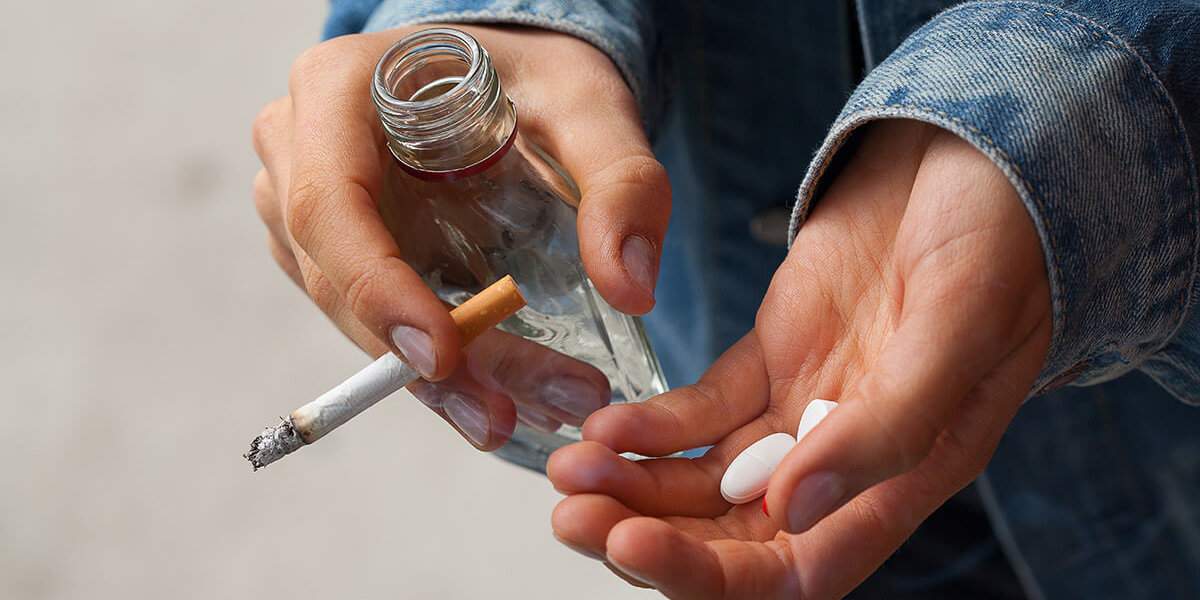What is a Substance Abuse Cycle?
Substance abuse often occurs in a recurrent cycle, a pattern of events that repeats over time. What makes it so easy to become caught in a substance abuse cycle? How does a substance abuse cycle morph so quickly into an addiction cycle? And when an addiction cycle occurs, how can recovery treatment help?
While substance abuse and addiction cycles are related, they are also distinct and have particular traits. For many, a substance abuse cycle often begins during a person’s teenage years or early adulthood. There are often moments of transition that mark the person’s movement from one step to the next—usually four phases that can turn into addiction. But sometimes these phases can be difficult to spot.
Phase One: Curiosity, Abuse, or Childhood Trauma
Curiosity is a sense of attraction, a draw or interest that might start with something as small as a thought. That curiosity can draw a person toward the substance, and might be sparked by an interesting story from a friend or a description of someone’s experience online. But that initial interest may also be instigated by an abusive person or environment. This may include a range of childhood traumas which, as studies have shown, significantly increase the risk of substance abuse.
Phase Two: Experimentation
Whether it be initiated by trauma or simply curiosity, a person then places themselves in situations where they can experiment with substances and test their boundaries. Experimentation can also be stimulated by outside pressures from friend groups or a need to escape abusive environments. Some individuals may have an adverse first experience which causes them to avoid substances in the future, whereas others experience euphoria that keeps them returning for more. This leads to the cycle of regular use.
Phase Three: Regular Use
Regular use does not necessarily mean using every day. But there is a predictable pattern to regular use, whether it is dictated by the time frame (weekend, evenings) or by certain emotional patterns. Emotional patterns might include stress or anxiety that cause a person to turn to the substance for that initial feeling of euphoria and happiness.
Phase Four: Dependence
When an individual moves into the phase of dependence, they experience an override of their faculties of choice. Their brain chemistry and physical body become dependent on the substance and function only to obtain the next “hit.” Another marker of dependence may include dangerous situations the person places themselves or others in with their attempts to acquire more of the substance. Despite financial depletion and a breakdown of their physical and social lives, a person who is dependent is simply unable to stop the cycle.
When Things Turn Into Addiction
What is known as “the addiction cycle” begins when a person experiences withdrawal symptoms when they are not using. These can be expressed as negative physical, psychological, and emotional responses that look like the body “revolting” against the person’s abstinence. The cycle of addiction is usually divided into four steps:
- Onset of addiction cycle
- Periods of abstinence
- Onset of withdrawal symptoms
- Return to substance use in order to stop withdrawal symptoms
Signs of the Addiction Cycle
There are many different ways to spot the signs of someone who is trapped in an addiction cycle. These are most easily observed in patterns of certain behaviors that may include:
- Physical breakdown of skin, teeth, muscle mass, etc.
- Collapsing personal relationships
- Inability to manage responsibilities at school or work
- Participation in illegal activities
- Financial instability due to substance purchases
- Inability to maintain day-to-day upkeep
- Antisocial or isolation behavior
If you or someone you know is exhibiting the signs of an addiction cycle, it is imperative to seek immediate professional help. The best resource is to seek out in-patient treatment at a recovery center.
What Does the Process of Addiction Treatment Look Like?
The treatment process usually begins with an initial interview with a recovery facility administrator whose task is to gather information. This may include details about your life, substance abuse cycle, and finally the details of the addiction cycle and its circumstances. Without this information, it is extremely difficult to prescribe a course of treatment that is most optimal for the person.
In most cases, a person must undergo a medically supervised detoxification program. This is essential for the body to reset and purge itself of the harmful substances poisoning it. It is key that the withdrawal process be professionally monitored since there are a number of dangerous side-effects that can occur while the body is detoxing. These might include:
- Respiratory difficulties
- Blood pressure and heart rate fluctuation
- Psychosis, depression, anxiety, suicidal thoughts
- Convulsions and muscle cramps
- Tremors in the arms and legs
- Auditory and visual hallucinations
Having the support you need during the detox process is essential to the success of the recovery process—both for physical health and emotional well-being.
Following detox, there are always recommendations to continue the process of recovery. The recovery plan includes a number of steps and phases that are intended to promote the fullest restoration of the person. Such steps may include:
- Individual therapy
- Residential treatment program
- Group therapy programs
- Trauma counseling
- Aftercare programs
- Dual diagnosis
- Cognitive behavioral therapy
There are many other therapies and approaches to recovery, and each person should receive individual care in order to map out the best path to full recovery. This will also include aftercare and relapse prevention programs that are intended to help overcome both the cycles of substance abuse and substance addiction. Don’t hesitate to seek help today.
If you are interested in the services offered by Pinnacle Recovery, please click here.






